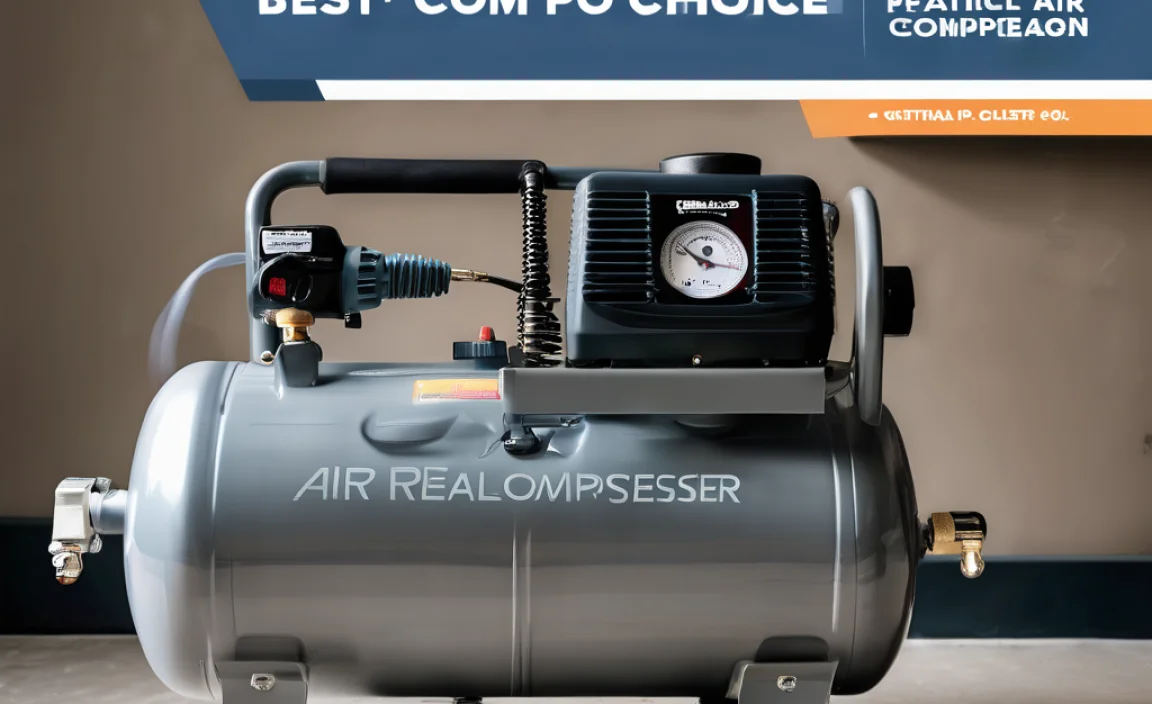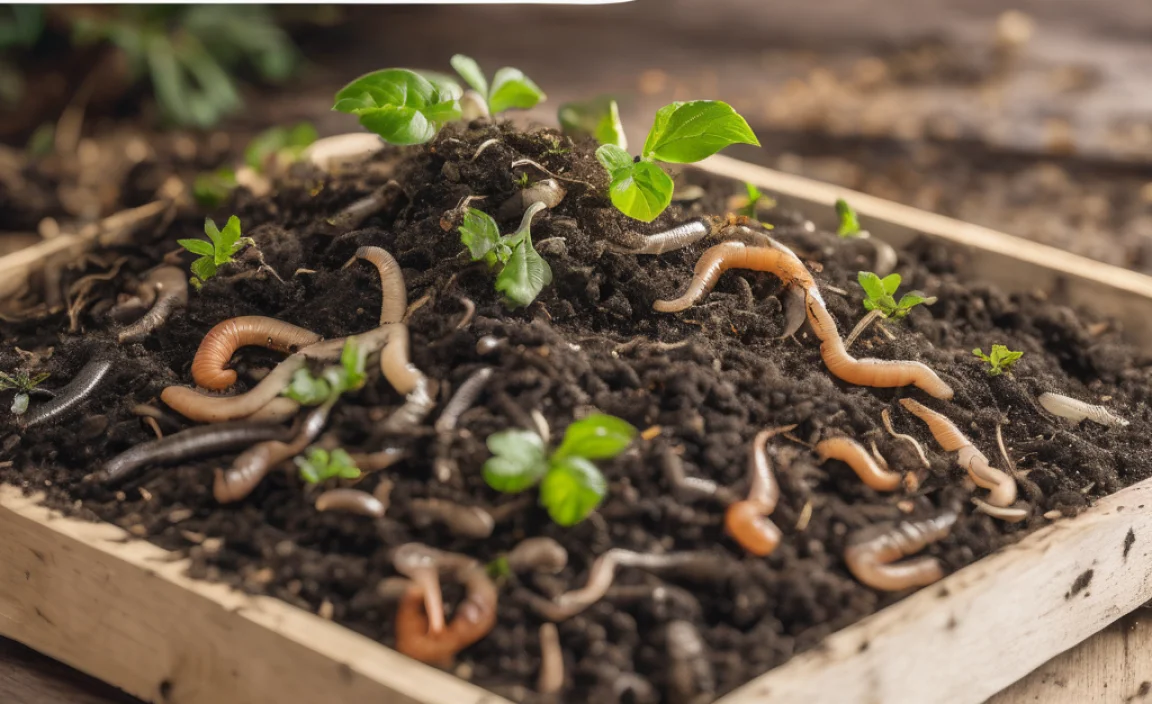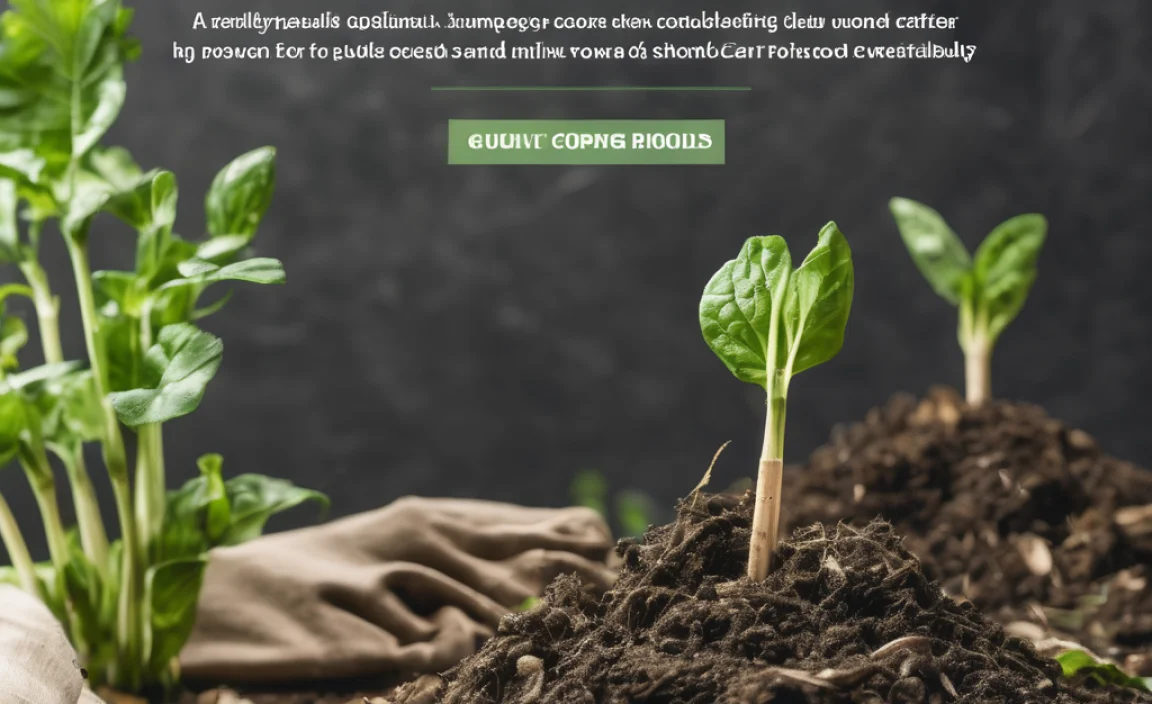Hey there! Ever wonder if tossing food scraps and yard waste is costing your business more than you think? It absolutely can! Landfill fees add up fast, and those materials are valuable. But what if I told you there’s a super simple way to figure out just how much you could save by composting? We’re going to break it down, step-by-step. Get ready to see the savings!
Composting for Businesses Calculator: Unlock Essential Savings
Let’s be honest, running a business means keeping a close eye on the bottom line. Every dollar saved is a dollar earned, right? You probably already know that composting is good for the planet, but have you considered how good it can be for your wallet? For many businesses, food and organic waste are a significant expense. Throwing them away means paying for disposal, which can get surprisingly pricey!
But here’s the good news: by understanding how much waste you generate and what it costs to get rid of it, you can actually calculate the potential savings from composting. Think of it as a financial fitness check for your business’s sustainability efforts. We’re going to walk through exactly how to do this, using a simple approach that anyone can follow. No fancy spreadsheets or accounting degrees required!
Ready to crunch some numbers and see how much greener your business can get – both environmentally and financially? Let’s dive in!
Why Businesses Should Care About Composting (Beyond Just Being Green)
We all want to do our part for the environment, and composting is a fantastic way to reduce landfill waste and create valuable soil nutrients. But for business owners, the benefits go far beyond just feeling good. Composting can translate into tangible financial savings and even boost your brand’s reputation.
- Reduced Waste Disposal Costs: This is the big one! Landfills charge fees based on the weight or volume of trash you send. By diverting organic waste through composting, you’ll have less total waste, leading to lower hauling and tipping fees.
- Potential Revenue Streams: High-quality compost can be a sellable product! Depending on your operation, you might be able to sell your finished compost to local gardeners, landscapers, or farms.
- Environmental Compliance & Regulations: Some regions are introducing or strengthening regulations around organic waste disposal. Proactively composting can keep you ahead of the curve and avoid potential fines. You can often find local waste management guidelines on your municipal government’s website. For example, the U.S. Environmental Protection Agency (EPA) offers a wealth of information on composting for businesses.
- Enhanced Brand Image: Consumers are increasingly conscious of businesses’ sustainability practices. Implementing a composting program can be a powerful marketing tool, attracting environmentally aware customers and setting you apart from competitors.
- Employee Engagement: Involving your team in sustainability initiatives can boost morale and foster a sense of shared purpose.
The “Composting for Businesses Calculator”: Your Savings Road Map
So, how do you actually put a dollar amount on these savings? It all comes down to understanding your current waste stream and the costs associated with it. This is where our “Composting for Businesses Calculator” comes into play. It’s not a magical app, but rather a step-by-step process to estimate your potential savings.
We’ll need to gather a few key pieces of information. Don’t worry, it’s mostly about observing and recording what your business is already doing (or not doing!).
Step 1: Estimate Your Organic Waste Volume
The first step is to get a handle on how much organic waste your business produces. This includes things like:
- Food scraps (from kitchens, cafeterias, restaurants, food preparation areas)
- Yard waste (grass clippings, leaves, small branches – if applicable)
- Compostable packaging (check if it’s certified compostable!)
How to Estimate:
- Observation Period: Choose a typical week (or two) to monitor your waste. Avoid holidays or unusual events that might skew results.
- Designated Bin: Set up a separate bin specifically for organic waste during this observation period. Label it clearly!
- Weigh or Measure: At the end of each day or week, weigh the organic waste bin. If you don’t have a scale, you can estimate volume by using standard trash can sizes (e.g., a 32-gallon bin is approximately X cubic feet). Consistent measurement is key.
- Record Keeping: Keep a log of the weight or volume of organic waste collected each day/week.
- Extrapolate: Once you have your weekly total, multiply it by 52 to get your estimated annual organic waste volume.
Example: A small café finds they fill a 32-gallon bin with food scraps every other day. If a 32-gallon bin holds about 4 cubic feet, and they produce 1.5 bins per day, that’s 6 cubic feet of food waste per day. Over a year (365 days), that’s 6 cubic feet/day 365 days = 2190 cubic feet of organic waste annually.
Step 2: Determine Your Current Waste Disposal Costs
Next, you need to know what you’re currently paying to have your trash hauled away. This usually involves two main costs:
- Hauling Fees: This is the regular fee your waste management company charges for picking up your dumpster.
- Tipping Fees: This is the fee charged by the landfill for each load of waste they accept. Sometimes this is already factored into your hauling fee, but sometimes it’s separate.
How to Find This Information:
- Check Your Invoices: Look at your recent waste management bills. They should itemize your charges.
- Contact Your Provider: If the invoices aren’t clear, call your waste management company and ask for a breakdown of your current costs associated with your regular trash pickup. Ask specifically what percentage of your current waste stream is organic material.
- Estimate If Necessary: If you can’t get an exact percentage, you can estimate based on typical business waste breakdowns. A common estimate is that 30-50% of commercial waste is organic.
Example: Our café pays $150 per pickup, with 2 pickups per week. They also pay $50 per ton tipping fee. If their dumpster typically weighs 2 tons when picked up, that’s $100 in tipping fees per pickup ($50/ton 2 tons). Total weekly cost = ($150 hauling 2 pickups) + ($100 tipping 2 pickups) = $300 + $200 = $500 per week. Annually: $500/week 52 weeks = $26,000.
Now, let’s say they estimate that 40% of their waste is organic. The annual cost associated with disposing of only the organic portion would be $26,000 0.40 = $10,400.
Step 3: Estimate Your Potential Composting Program Costs
Diverting waste to composting isn’t entirely free upfront, but it’s almost always less expensive than landfilling in the long run. You need to factor in potential costs.
These can include:
- Composting Service Fee: If you contract with a commercial composting service, they charge a fee for hauling your organic waste to their facility. This fee is typically lower than your current trash hauling fee for the same volume of waste.
- Equipment Purchase: If you plan to compost on-site, you might need to buy bins, tumblers, or even larger commercial composting systems.
- Labor: If you’re managing it internally, factor in the time your staff will spend collecting and managing the compost.
- Training: Ensuring staff know what can and cannot be composted is crucial.
How to Estimate:
- Get Quotes: Contact local commercial composting services. Ask for their collection schedule and pricing for the estimated volume of organic waste you identified in Step 1.
- Research Equipment: If considering on-site composting, research the cost of appropriate systems for your business size. Resources like the North Carolina State University’s Compost website can guide you on different methods.
- Estimate Labor Time: If composting on-site, estimate the weekly hours needed for management and multiply by an hourly wage.
Example: Our café gets a quote from a composting service. They estimate needing a 64-gallon organics bin picked up twice a week. The service quotes $100 per pickup, including hauling and processing. This totals $100/pickup 2 pickups/week = $200 per week. Annually: $200/week 52 weeks = $10,400.
In this scenario, the cost of the composting service is exactly the same as the estimated landfill cost for their organic waste. However, this doesn’t account for the remaining non-organic waste. If 40% of their waste was organic, the other 60% is still going to landfill. They might be able to downsize their regular trash dumpster or reduce pickup frequency, saving money on that service!
Step 4: Calculate Your Potential Savings
Now for the exciting part! This is where we compare your current costs to your potential composting costs to see the net savings.
Formula:
Total Annual Waste Disposal Cost – (Annual Cost of Composting Service + Reduced Cost of Landfill Waste) = Annual Savings
Remember, by diverting organic waste, you can often downsize your regular trash dumpster or reduce its pickup frequency, leading to savings on your non-organic waste disposal costs as well. Let’s assume our café can reduce their regular trash hauling and tipping fees by 40% because 40% of their waste is now being composted.
Example Calculation for the Café:
Current Total Annual Waste Cost: $26,000
Estimated Annual Cost of Composting Service: $10,400
Reduced Cost of Landfill Waste (60% $26,000): $15,600
Total Cost with Composting: $10,400 (compost) + $15,600 (landfill) = $26,000. Wait, that doesn’t look like savings yet?
Ah, but here’s the trick: The composting service fee is lower than the original fee for hauling that same volume of waste to the landfill. Our estimated cost for disposing of organic waste was $10,400. The composting service is $10,400. But that $10,400 is for a separate service that handles just the organics. We’re still paying for disposal of the remaining 60% of waste.
Let’s refine the example to show clear savings on the non-organic portion:
Current Annual Waste Cost: $26,000
If 40% of the waste is organic, then 60% is non-organic. The cost for disposing of the 60% non-organic waste would be $26,000 0.60 = $15,600.
Annual Cost of Composting Service (for the 40% organic waste): $10,400.
Total Annual Cost with Composting = $15,600 (non-organic disposal) + $10,400 (organic composting) = $26,000.
This still doesn’t show savings. The key is that the cost of the composting service for the organic waste is often less than the cost to landfill that same organic waste. Let’s assume the café’s current cost to landfill the organic portion (40% of total) is $10,400. If the composting service for that same 40% is only $7,000, then:
Original Cost for Organic Waste (landfilled): $10,400
New Cost for Organic Waste (composted): $7,000
Savings on Organic Waste: $10,400 – $7,000 = $3,400
Additionally, they now have less non-organic waste. Suppose the cost for the non-organic waste (60%) is reduced by down-sizing the bin to $12,000 annually (from $15,600). Then:
Total Savings = $3,400 (organics) + ($15,600 – $12,000) (non-organics reduction) = $3,400 + $3,600 = $7,000 per year!
So, by composting, the café could save approximately $7,000 per year!
Putting the Numbers Together: A Sample Calculator Table
Let’s see this in a table format. This helps visualize the components of the calculation.
| Cost Category | Current Annual Cost ($) | Estimated Annual Cost with Composting ($) | Potential Annual Savings ($) |
|---|---|---|---|
| Total Waste Disposal (Landfill Fees, Hauling) | 26,000 | (Calculated Below) | (Calculated Below) |
| Subtotal: Landfill Organic Waste Portion (40%) | 10,400 | 7,000 (Composting Service) | 3,400 |
| Subtotal: Landfill Non-Organic Waste Portion (60%) | 15,600 | 12,000 (Reduced Landfill/Hauling) | 3,600 |
| Estimated Total Annual Cost with Composting | 19,000 (7,000 + 12,000) | ||
| Total Potential Annual Savings | 7,000 (26,000 – 19,000) |
This table shows how each part of your waste stream contributes to the overall cost and how much you can save by diverting the organic portion to a composting program.
Tips for a Successful Business Composting Program
Implementing a composting program doesn’t have to be overwhelming. Here are some practical tips to ensure success:
- Start Small and Scale Up: You don’t need to compost everything at once. Focus on high-volume, easy-to-collect items like pre-consumer food scraps (from kitchen prep, not plates).
- Educate Your Staff: Clear signage and regular training are vital. Make sure everyone knows what goes into the compost bin and what stays out. Consider using visual aids.
- Choose the Right System: Decide whether an on-site system or a commercial hauling service is best for your business. Factors include space, volume of waste, and budget.
- Contamination Control: This is key! Educate staff and customers (if applicable) to avoid putting plastics, metals, or general trash into the compost bins. Contaminated compost can be rejected by processing facilities, turning your savings into losses.
- Regular Monitoring: Keep an eye on your bins, your composting process (if on-site), and your waste hauling bills. Adjust as needed.
- Explore Local Resources: Many cities and counties offer resources, grants, or technical assistance for businesses looking to start composting programs. Check your local government’s sustainability or waste management department. For instance, in California, many local governments offer assistance through programs mandated by CalRecycle regulations.
On-Site vs. Commercial Composting: Pros and Cons
The decision between composting on-site or using a commercial service is a big one. Here’s a quick look

I am passionate about home engineering. I specialize in designing, installing, and maintaining heating, ventilation, and air conditioning systems. My goal is to help people stay comfortable in their homes all year long.



